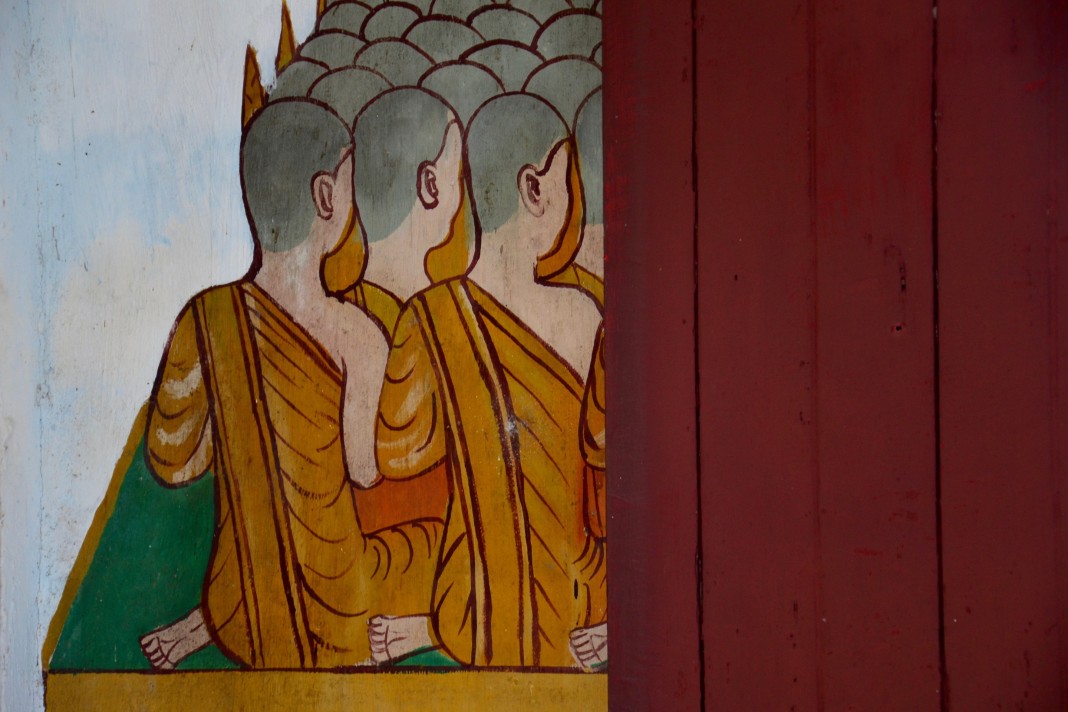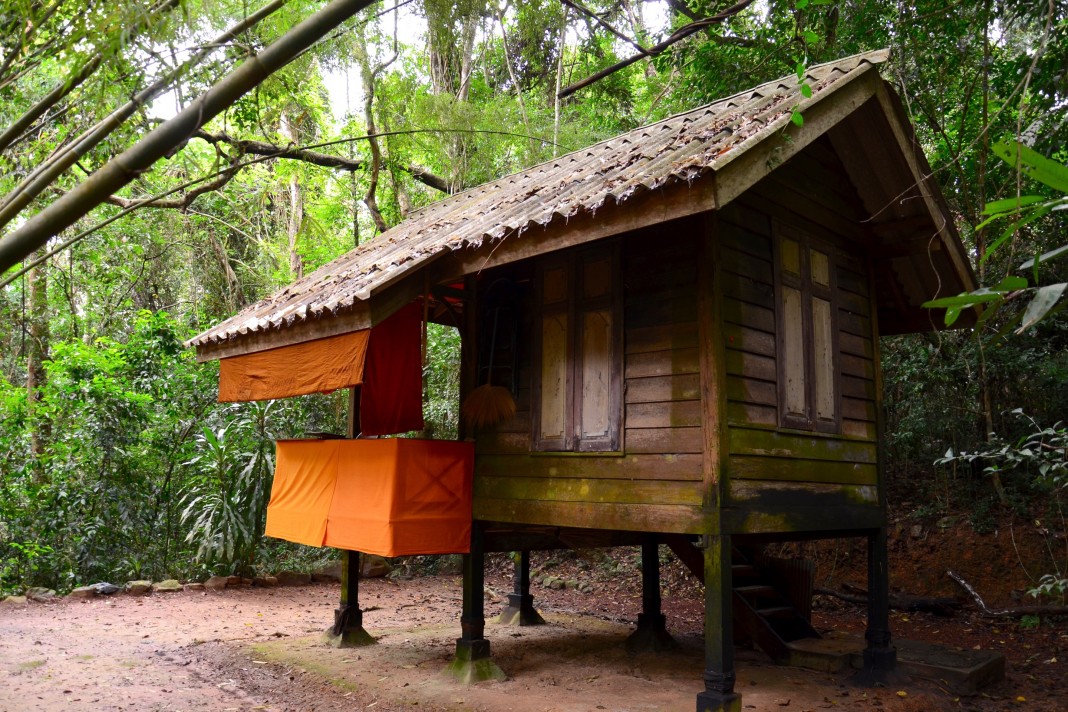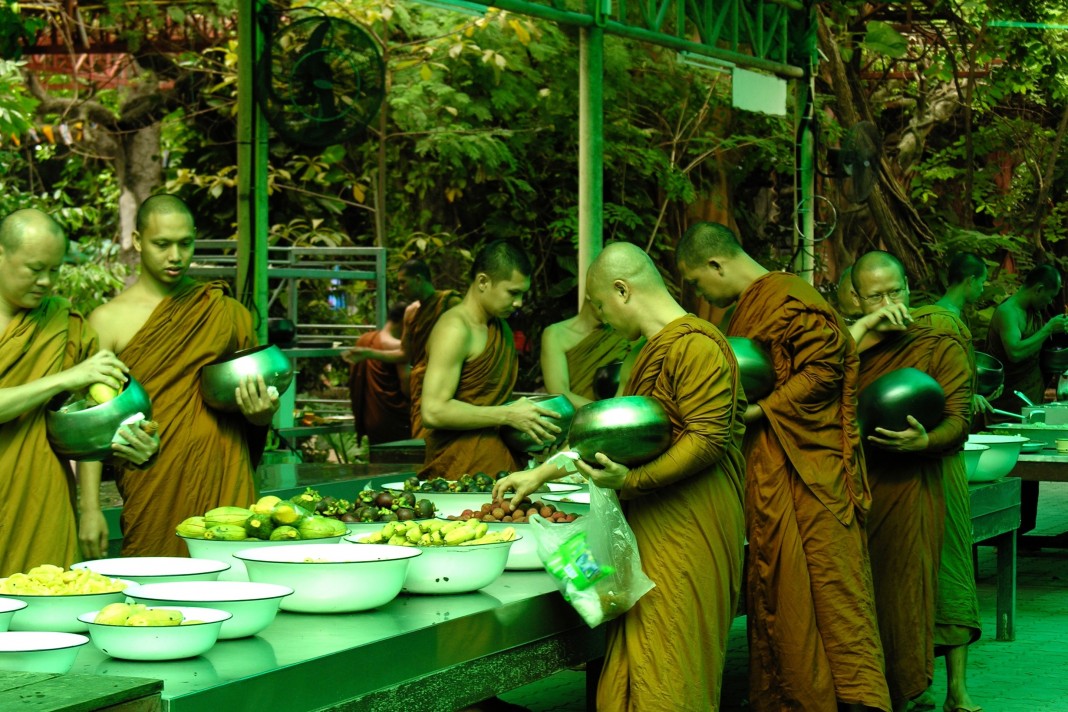
With that in mind, we’ve spotlighted 16 reliable venues where travellers can nang samadhi, to use the Thai phrase for sitting in meditation, during retreats and courses of varying lengths and levels.
This is far from an exhaustive list of meditation centres and monasteries in Thailand. The aim is to point out the most popular and reliable options that we think are most suitable for English-speaking travellers. We’ve left out the many venues that do not typically accommodate non-Thai speakers.

Buddhist meditation is the main focus here. We’ve not included the many “wellness centres” that offer secular-styled meditation along with yoga, detox and other activities. (If you’re interested in that kind of thing, Ko Pha Ngan has one of the more extensive yoga and wellness scenes found this side of Bali.)
At most venues you can expect a mix of seated and walking meditation to go with listening to Dhamma talks and meeting with instructors. At the monasteries, you may also be asked to perform daily chores, to chant Pali scriptures and to bow in homage of the Buddha, Dhamma and Sangha.

In addition to the above three terms, you may want to familiarise yourself with other terms and techniques related to Theravada Buddhist meditation, such as Vipassana (Insight), Samatha (Concentration), Metta (Loving-kindness), Sati (Mindfulness), Anapanasati (Mindfulness of Breathing) and Satipatthana (the Four Foundations of Mindfulness).
By and large, multi-day retreats are not easy. Most venues will expect you to rise by 05:00 in the morning; to refrain from eating after noon; to stay in spartan lodgings divided by gender; to wear non-revealing white clothes; and to otherwise follow the Eight Precepts. In some cases, adhering to only the Five Moral Precepts may be acceptable.

Most of these venues operate on a donation-only basis, although some request specific fees from those staying in provided lodgings. It’s fine to turn up unannounced at some, while others request advance notice.
Northern Thailand
Overview: The north is probably the most popular Thai region for meditation retreats among foreign travellers, and Chiang Mai the most popular destination. The practice up here tends to focus heavily on Vipassana, often with influences from Burmese masters like Mahasi Sayadaw. It can get chilly up north -- bring a sweater!

Wat Phra That Si Chom Thong, Doi Inthanon
The international meditation centre set behind this historic temple was founded in 1992 by Ajahn Tong, a revered monk known for his mastery of Vipassana. Also containing a sacred 15th-century chedi, the wat stands near the access road to Doi Inthanon National Park and offers 10-day and three-week retreats.
Wat Phra That Si Chom Thong Voravihara
Off Highway 108, Chom Thong, Chiang Mai
T: (053) 342 184
info@watchomtong.com
https://www.watchomtong.com/meditationcoures
Wat Doi Suthep, Chiang Mai
Many travellers know this mountaintop wat as a popular attraction overlooking the north’s largest city. Descend some stairs from the gilded chedis to find the attached International Meditation Centre, where foreigners are invited to learn Vipassana based on the teachings of Ajahn Tong. Stays range from four days to three weeks, making this a flexible option and a safe bet for beginners.
Wat Phadhat Doi Suthep Rajawora Vihara
Doi Suthep Mountain, Muang Chiang Mai
T: (053) 295 012
doisuthepinfo@gmail.com
https://www.fivethousandyears.org/
Wat Suan Dok, Chiang Mai
This temple runs popular two-day and four-day courses that are good options for foreigners who are curious about meditation but don’t feel ready to commit to a longer retreat. Dinner is available, as opposed to breakfast and/or lunch only, like in most monasteries. The wat also offers drop-in monk chats held in the library of the associated Buddhist university.
Wat Suan Dok
139 Suthep Rd, Muang Chiang Mai
T: (053) 278 304
thaimonkchat@yahoo.com
http://www.mrlearnning.com/
Wat Pa Tam Wua, Mae Hong Son
Situated about halfway between Pai and Mae Hong Son in Thailand’s northwestern corner, this cliff-rimmed monastery has proven popular with backpackers thanks to its “edge of the world” feel and flexible approach. Beginners and experienced meditators are welcome, and there is no minimum or maximum length of stay. Volunteering is also possible.
Wat Pa Tam Wua
One km off Highway 1095, Huay Pha, Mae Hong Son
T: (081) 031 3326
watphathamwua.2561@gmail.com
https://www.wattamwua.com/
Northeast Thailand
Overview: Many of the monasteries in Isaan fall under the Thai Forest Tradition, in which monastics aim to live as closely to how the Buddha lived as possible. Revitalised by the late Ajahn Mun, hallmarks of this austere tradition include living in the forest, using the human body as a meditation subject, and maintaining mindfulness throughout all activities.

Wat Pah Nanachat, Ubon Ratchathani
One of the many branches of nearby Wat Nong Pah Pong, this forest wat is the only one in Thailand that uses English as its primary language. It began in 1975 as a home for the foreign disciples of the late Ajahn Chah, a monk who made profound principles attainable through simile and story telling. The days begin at 03:00 and men staying longer than a week are expected to shave their heads and eyebrows -- beginners should look elsewhere. Though women can stay here, they should be aware that there is no nun community and a former resident monk was excommunicated in 2009 for presiding over an ordination ceremony for women in Australia.
Wat Pah Nanachat
One km off Highway 226, Warin Chamrap, Ubon Ratchathani
http://www.watpahnanachat.org/about
While Northeast Thailand has many other forest monasteries that focus on meditation, such as Wat Pah Baan Taad in Udon Thani and Wat Hin Mak Peng outside of Nong Khai, these can be a challenge for non-Thai speakers. If you’re a self-sufficient and experienced meditator, you could give them a shot.
Central Thailand
Overview: This region has some great options for travellers looking to give meditation a shot without committing to an intensive retreat (although those are available too). It’s also notable for its prominent female meditation teachers, including “rebel” bhikkhunis at one wat.

Little Bangkok Sangha, Bangkok
This group meets for “freestyle meditation” sessions on Mondays from 18:30 to 20:00 at the Rojana Dhamma Centre off Sukhumvit Rd. The founder, British monk Phra Pandit, has trained in the traditions of Mahasi Sayadaw, Ajahn Chah and Dhammakaya. Also check out the Sangha’s Facebook group to find out about English-language talks, meetings, retreats and other Buddhist events happening in the Bangkok area and beyond, including many that are not organised by “Little Bang” itself.
Rojana Dhamma Centre
Sukhumvit Soi 23, Khlong Toei, Bangkok
T: (02) 664 2095
https://www.littlebang.org/
Wat Maha That, Bangkok
A stone’s throw from the Grand Palace in Bangkok’s historic district, the daily meditation courses offered at this prominent and historic temple have been attracting curious travellers for decades. Conducted at 07:00, 13:00 and 18:00 and lasting two hours, the beginner Vipassana courses are led by English-speaking monks. The sprawling wat doubles as a university and foreigners can arrange longer stays for meditation and Buddhist studies.
Wat Mahathat Yuwarajarangsarit Rajaworamahavihara
3 Maha Rat Rd, Phra Nakhon, Bangkok
T: (02) 222 6011
Wat Prayong, Bangkok This temple’s one-week retreats are suitable for beginners thanks to the guidance of Mae Chee Brigitte, an English-speaking German nun with more than three decades of formal Buddhist training. The wat sits amid rice paddies near Bangkok province’s far eastern border, well removed from the urban bustle. A favourite teacher of many foreign Buddhists based in Thailand, MC Brigette occasionally teaches at other venues, including Wat Tham Krissana near Khao Yai National Park.
Wat Prayong Kitiwannaram
Khlong Sipsi Rd, Nong Chok, Bangkok
meditationthailand@yahoo.com
http://www.meditationthailand.com/
https://www.facebook.com/mindfulnesretreats
The House of Dhamma, Bangkok
This little centre occupies a yellow shophouse in the Lat Phrao area of northern Bangkok. One- and two-day introductory meditation courses are guided by Ajahn Helen, a British teacher and artist who spent 11 years ordained in the Zen Buddhist tradition of Korea before training in Vipassana under several Thai masters. She also teaches Metta meditation along with Reiki and other courses, including “The Art of Presence for Kids”.
The House of Dhamma
26/9 Lat Phrao Soi 15, Chatuchak, Bangkok
(02) 511 0439
dhamma.art@gmail.com
http://houseofdhamma.com/index.html
Wat Songtham Kanlayanee, Nakhon Pathom
One of modern Thailand’s more intriguing monastics is not a bhikkhu but rather a bhikkhuni, a word first used when women were ordained during the Buddha’s lifetime. Thailand’s Theravada establishment still refuses women the right to become equal to their male counterparts, but this did not stop English-speaking Dhammanda Bhikkhuni from ordaining in Sri Lanka in 2003. Since then, she became abbot of this temple in Nakhon Pathom to serve as a home for Thailand’s growing community of bhikkhunis. Foreign women are welcome to visit for a day, or stay to join the monastic routine for up to one week.
Wat Songtham Kanlayanee (or Songdhammakalyani)
195 Phetkasem Rd (Highway 4), Muang Nakhon Pathom
T: (034) 258 270
dhammananda9d@gmail.com ; agnes.chetsumon@gmail.com
Eastern and Southern Thailand
Overview: This section covers retreat options found near some of Thailand’s beaches and coastlines. Southern Thailand is notable for several meditation centres based in the tradition of the late Buddhadasa Bhikkhu, a native of Surat Thani province.

Wat Marp Jan, Ban Phe
Based in the forest meditation tradition of Ajahn Chah, this monastery with a boat-shaped wihaan lies only 10 km from the Ko Samet ferry piers near Ban Phe in mainland Rayong province, 200 km southeast of Bangkok. The abbot, Ajahn Anan, speaks English and there may be foreign monks around as well. Experienced meditators are welcome to stay and join the monastic life, and the abbot leads more structured retreats from time to time.
Wat Marp Jan
6 km off Sukhumvit Rd (Highway 3), Klaeng, Rayong
T: (038) 026 252
marpjan@gmail.com
https://watmarpjan.org/en/
Wat Khao Santi, Hua Hin
Who said you have to skip that beach time in order to do a retreat? The five-day beginner courses at this wee temple in Hua Hin—set near the popular Wat Khao Takiab—take place only from 08:00 to noon and meditators part ways each day, staying in their own chosen accommodation. Khun Reinhard, an English-speaking German instructor who trained at Wat Suan Mokkh, provides guidance alongside the monks.
Wat Khao Santi
Between Takiab Soi 8 and Hua Hin Soi 89, Hua Hin, Prachuap Khiri Khan
kr.emailcontact@gmail.com
https://meditationinhuahin.org/index.html
Wat Suan Mokkh, Chaiya
This forest monastery is a key part of the legacy of Bhuddadasa Bhikkhu, whose progressive philosophy sought common ground between all religions and made him one of the most respected Buddhist thinkers of the 20th century. Though he died in 1993, you can still practise at the associated International Dharma Hermitage. Beginning on the first of each month, the 10-day retreats are still the go-to pick for many backpackers.
Wat Suan Mokkh International Dharma Hermitage
1.5 km off Highway 41, Chaiya, Surat Thani
http://www.suanmokkh-idh.org/index.html
Dipabhavan Meditation Centre, Ko Samui
For those who would prefer to meditate on a beautiful island, this sea-view centre is associated with Wat Suan Mokkh and offers similarly styled retreats. Beginning on the 11th and 20th of each month, the one-week retreats unfold amid the forest in the mountainous interior of Ko Samui—a universe removed from Chaweng Beach!
Dipabhavan Meditation Centre
1 km from Hua Thanon, Ko Samui, Surat Thani
T: (096) 993 6955
https://dipabhavan.weebly.com/
Wat Khao Tham, Ko Pha Ngan
Set on another sea-view hillside, this time on Ko Pha Ngan within view of Samui, this small monastery and retreat centre has finally re-established itself after the 2013 departure of long-serving instructors Rosemary and Steve Weissman. Retreats are now led by Phra Mae-ti-ko, who returned to the monkhood at Wat Suan Mokkh in 2015 after three decades as a professor. Fine for beginners, the 10-day retreats start on the 10th of each month.
Wat Khao Tham Insight Meditation Centre
Ban Tai, Ko Pha Ngan, Surat Thani
T: (087) 974 9465
took.sookkasem@gmail.com
https://www.kowthamcenter.org/
Multiple regions
Overview:We’ve added this section specifically for the SN Goenka meditations centres found in all regions of Thailand.
SN Goenka Vipassana centres
Thailand hosts nine of the 203 meditation centres operating on four continents in the tradition of the late SN Goenka, an Indian-Burmese instructor who was instrumental in popularising Vipassana during the 20th century. The 10-day courses are held at least twice per month at the centres found in the provinces of Bangkok, Prachinburi and Kanchanaburi in the central region; Chanthaburi in the east; Udon Thani and Khon Kaen in the northeast; Lamphun and Phitsanulok up north; and Nakhon Si Thammarat down south.
While these retreats are challenging, they’re also considered suitable for beginners due to the steady availability of teachers for individual attention. All of the centres provide English-language instruction. Here’s a good account of one beginner’s experience at the Dhamma Dhani centre in Bangkok. If given the choice, we’d opt for the Dhamma Kancana centre near Sangkhlaburi, as the air tends to be cooler there and the setting is more scenic than most.
SN Goenka Vipassana centres in Thailand:
Dhamma Dhani, Khlong Sam Wa, Bangkok: http://www.dhani.dhamma.org/
Dhamma Kamala, Muang Prachanburi: http://www.kamala.dhamma.org/
Dhamma Kancana, Sangkhlaburi, Kanchanaburi: http://www.kancana.dhamma.org/
Dhamma Canda Pabha, Pong Nam Ron, Chanthaburi: http://www.candapabha.dhamma.org/
Dhamma Puneti, Muang Udon Thani: http://www.puneti.dhamma.org/
Dhamma Suvana, Nong Ruea, Khon Kaen: http://www.suvanna.dhamma.org/
Dhamma Simanta, Pa Sang, Lamphun: http://www.simanta.dhamma.org/
Dhamma Abha, Wang Thong, Phitsanulok: http://www.abha.dhamma.org/
Dhamma Porano, Lan Saka, Nakhon Si Thammarat: http://www.porano.dhamma.org/
Reviewed by
David Luekens
David Luekens first came to Thailand in 2005 when Thai friends from his former home of Burlington, Vermont led him on a life-changing trip. Based in Thailand since 2011, he spends much of his time eating in Bangkok street markets and island hopping the Andaman Sea. David is also the founder of Thai Island Quest—a newsletter focused on covering every island and beach in Thailand.